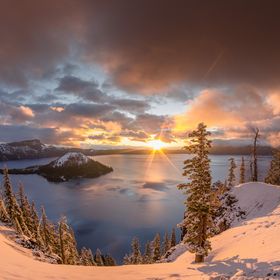

northcoastgreg
Follow
Views
691
Likes
Awards
Featured
Staff Favorite
Peer Award
Superb Composition
Top Choice
Absolute Masterpiece
Outstanding Creativity
Magnificent Capture
Superior Skill
All Star
Categories
Same photographer See allBehind The Lens
Discover more photos See all
Behind The Lens
Location
This shot was taken at Sequioa Park Zoo in Eureka, CATime
This was shot around 10 a.m, around the time the zoo opens. This particular eagle, a female named Cheyenne, tends to be rather high-strung. Visitors make her nervous, which causes her to retreat to parts of her exhibit as far away as possible from the viewing area. By arriving at opening time and entering the exhibit very quietly, I was able to get a good close-up shot of the raptor along with an excellent background (a redwood forest, no less). The trick for photographing animals in a zoo is to try to make it look like they're not in a zoo --- which means, finding backgrounds that can be blurred out to look as if taken in a natural setting, rather than within an exhibit.Lighting
I very much prefer to photograph animals, whether in a zoo setting or in the wild, on overcast days. Even then I prefer mornings or afternoon when the strongest source of light coming through the clouds is at a more attractive angle, rather than coming straight down on the subject.Equipment
This was shot hand held with the Pentax K-5iis and the DA* 300 f4, a very sharp, contrasty professional grade telephoto lens. For shooting animals in overcast light on an APS-C camera, I have found that you need telephoto glass that's f4 or faster. Moreover, high-end lenses are helpful to capture the sharpness, contrast, and overall rendering that make for spectacular wildlife imagery.Inspiration
The particular exhibit with Cheyenne the eagle had just opened. The zoo wanted me to take photographs of the bird for use in brochures, advertisements, and social media. It's always exciting to photograph a newly introduced creature. There are always new problems to solve and new challenges to overcome. After taking over a hundred shots, I donated the best twenty shots to the zoo.Editing
In lightroom, using the adjustment brush, I lightened (and changed the white balance) on some of the darker areas under the bird's beak. I also slightly darkened the background and added contrast to the bird's darker feathers.In my camera bag
It really depends on what I'm photographing. For zoo photography, I usually have just one DSLR along with either my 300mm prime lens and/or a 70-200 f2.8 zoom. Sometimes I'll also bring along a 50mm macro for photographing otters swimming in their tank.Feedback
For photographing animals, whether in the wild or in a zoo setting, you need to develop at least some level of understanding about the particular creature you wish to photograph. You need to have some idea at how the animal is likely to behave so you can anticipate photography opportunities. In a zoo setting, this means spending some time at the animal's exhibit observing him, getting an idea of the his habits, what he likes to do, how he moves around in the exhibit, how he behaves during feeding time, how he interacts with any other animals he may live with. Once you have a sense of how the animal tends to behave, you're more likely to be prepared for that special shot.











































